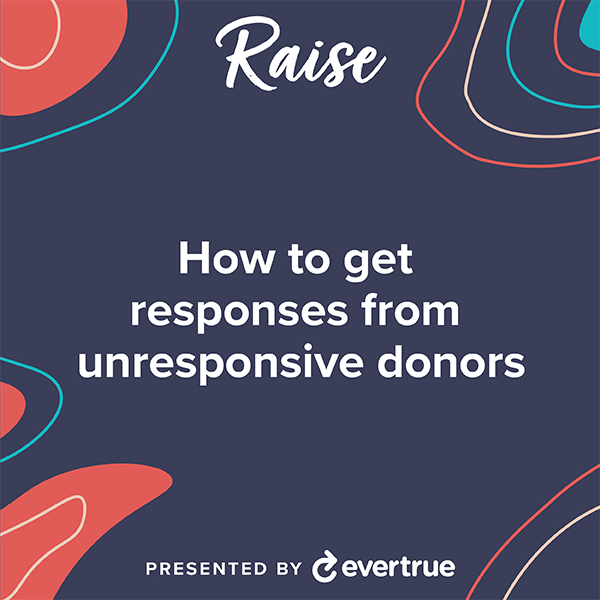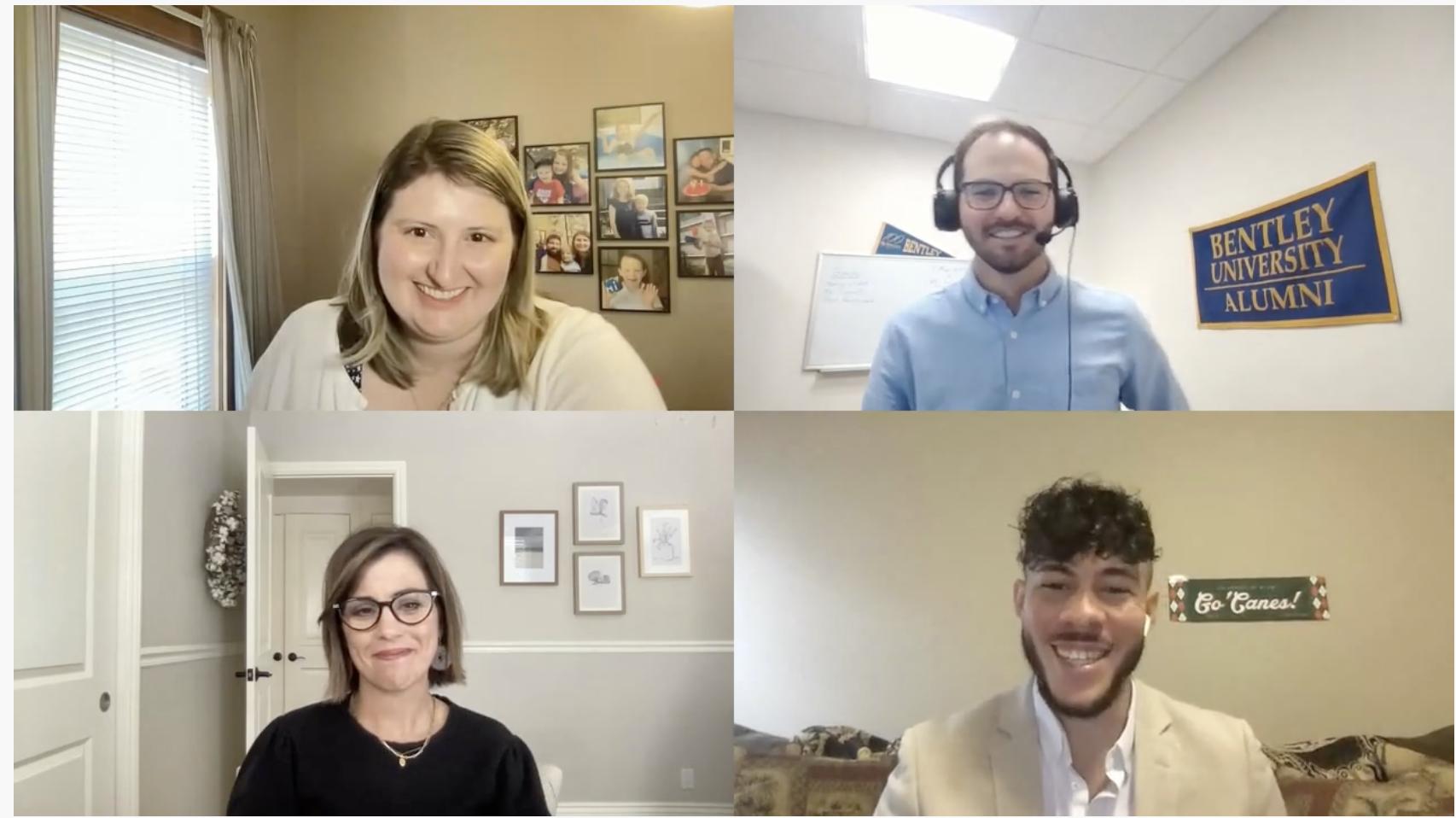We’ve learned that if a DXO books a meeting with a prospect, they close a gift more than ⅔ of the time (Source: EverTrue analysis).
Then read more about our top takeaways from the discussion.
You know those donors you just know are capable of making a real difference if you could just get them to reengage with the university? It’s an all-too-familiar game of finding just the right touchpoint to grab their attention. We recently had a conversation with three rockstar Donor Experience Officers – Dianna Gallagher from Santa Clara University, Caleb Murray from the University of Miami, and Mac Kaseman from Bentley University – who shared some of their best tips and tricks to get responses from even the most elusive donors.
Across the board, meeting volume within DXOs’ portfolios increased by 121% from FY19 to FY22.
To paint what that looks like on a daily basis…Dianna, Caleb, and Mac each reach out to about 30 donors a day on average (though sometimes they log 50-70 interactions each day). For some perspective, the average gift officer carries a portfolio of 150 prospects, meaning DXOs are covering ⅓ of a standard gift officer’s year-long portfolio on a DAILY BASIS! (Cue: mind-blown emoji)
The math here is pretty simple. More outreach = more contacts = more leads = more gifts.
But, how do DXOs go about booking that meeting? How do they get in touch with even the toughest-to-reach donors?
Let’s dive into the methods and tips DXOs use to secure these interactions:
1. You a a real human. Show it – with video!
Video is an easy way to show there’s a real live (kind, funny, dedicated, awesome) human behind the email.
- Grab a whiteboard and write the donor’s name up on it. Add in little touchpoints ( pom poms!) to show thatyou took the time to create this video just for them.
- Step into the donor’s shoes: What would YOU want to watch from start to finish? Use this as a guide for outlining exactly what you want to communicate (think: opening line, length of video, CTA).
- Talk a walk around campus and drum up that nostalgia! Find that place that every alum heads to when they come back to visit…and bring campus to your donor’s inbox. It’s a great conversation starter, and might just be the fuel that’s needed to help make a further connection.
2. Get creative with subject lines
47% of people open an email based on the subject line (Source: Snov.io)…so they are important to get right!
Use a tool that can help you determine the effectiveness of your subject line (Omnisend and Email Subject Line Grader are two good–and free–sites to check out). Plug a few subject lines you’re thinking of into this tool, then test them out in your outreach. Note which subject lines t garner the most responses, and add those into your regular mix.
In addition to subject lines, make sure your opening sentence is engaging, too – those mailbox previews can be just as important as the subject line itself. Introduce yourself, share something that helps connect you (are you an alum of the institution? Anything you enjoy on campus that you know they do too?) and build that affinity from the get-go.
Subject line tips from DXO Dianna Gallagher at Santa Clara:
- Keep it short and sweet
- A surefire subject line: “Hello from SCU!”
- Make sure you have a captivating first line of the email (donors see a preview in their inboxes)
3. Pick up the phone
The reality is: no one is going to answer the phone if you don’t make the call. Sure, sending an email may seem like the less-daunting task, but phone calls work! Here are some tips to make it easier:
- Have a script bookmarked somewhere for easy access. You might not even need it! But, it can be helpful to have a reference point so it’s harder to stumble on your words or forget an important detail you need to mention. (We wrote one for you.)
- Keep it straightforward, simple, and genuine. We’re all busy…so keep this phone call to the point so the donor can see how easy it is to fit a quick conversation into their day.
- Leaving a voicemail? Include a benefit statement. Share what you’re calling about up front (and make sure it’s a good reason!) to grab their attention right at the beginning.
- If they answer the phone, create a contact report template to help guide you through the conversation. How do you want to move the conversation forward toward asking for a gift? Jot down some prompts you can pull from in an instant…like: What was your favorite part of your experience at the institution? What made you want to answer this phone call from me? What areas have you been most interested in supporting in the past? These questions help keep the conversation flowing, allowing the donor to provide open-ended answers while pushing you towards the end goal of closing a gift.
- Still not getting a response? Try a quick text! Maybe there’s something that’s preventing them from picking up the phone, and sending a few messages back and forth would be easier. We all text these days…no reason to not incorporate it into your donor outreach strategy, too!
Related resource: A DXO’s top three questions to uncover planned gifts
4. Keep following up. Trust the process.
DXOs use cadenced outreach to guide their contact with each prospect: a defined set of engagement steps, ranging from intro videos to email to phone calls to social media engagement, starting with an initial “hello” and ultimately ending with an ask.
Each cadence follows a different route, and each has the goal of keeping the donor up to date, in tune with, and interested in why a DXO is reaching out to them.
Dianna Gallagher made a great comparison: a cadence is like a staircase.
- Take the first step: introduce yourself.
- Second step, build on that relationship.
- Third, make the ask for support.
Sometimes, you take a step or two down if you lost your footing. Or, you could feel really energized after that first step and skip all the way up to step three or four. Ultimately, the goal is to keep working your way up the staircase to build a strong connection with the donor until you reach the landing.
If you’re not quite sure where to start with building a cadence, we’ve got you covered. We built out a DX Starter Kit with tried and true outreach templates from EverTrue’s Donor Experience partners… Test it out on a group of 25 hard-to-reach prospects, and let us know if it helps.
5. Don't be afraid to break up.
Ah, yes. The break-up email. No, we’re not talking about a message full of heartbreak and teenage angst. We’re talking about an intentional message to a prospect who has been unresponsive to your other outreach methods, letting them know you’re going to respect their space and stop reaching out.
In this message, share that you want to be respectful of their non-response, understand it might not be ideal time to connect right now, and reiterate that you’ll stay in touch every once in a while with some University news that may interest them.
What typically happens after a break-up email is sent? Check out this testimonial from Amanda Trabue, Vice President for Development at Western Kentucky University.
Amanda Trabue, VP for Development at Western Kentucky University
The breakup email is often the push that some donors need to connect with you. “Don’t it always seem to go that you don’t know what you’ve got ‘til it’s (almost) gone.”
Polite persistence pays off! We’re here to help make it a part of your every day so that you can work smarter, not harder, with awesome results. Reach out!

